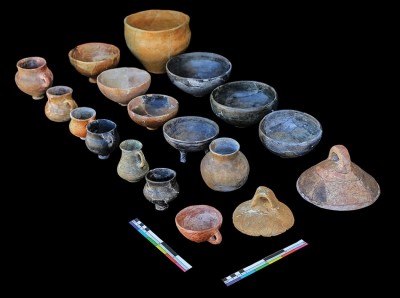A palimpsest grave at the Iron Age cemetery in Estark-Joshaqan, Iran
Abstract

At the onset of the Iron Age, after c. 1200 BC, Iran was a place of major social transformation. After the collapse of the Bronze Age urban civilisations, the land was inhabited mainly by groups of mobile pastoralists that gradually transitioned from tribal organisation into loose federations, before finally developing into the Median and Persian early states (Potts 2014). This transition is still poorly recognised, as settlement sites from this period are scarce and most evidence is from cemeteries that were excavated many decades ago. Here we report results of excavations at a recently discovered cemetery that may provide new insights into the social complexity and cultural affinities of Iron Age nomads in Iran.
Authors
- Javad Hosseinzadeh
Department of Archaeology, University of Kashan, Qotbe Ravandi Boulevard, Kashan, Iran - Mohsen Javeri
Department of Archaeology, University of Kashan, Qotbe Ravandi Boulevard, Kashan, Iran - Majid Montazerzohouri
Department of Archaeology, University of Kashan, Qotbe Ravandi Boulevard, Kashan, Iran - Ali Banitaba
Department of Mining, University of Kashan, Qotbe Ravandi Boulevard, Kashan, Iran - Reza Nori Shadmahani
Department of Archaeology, University of Kashan, Qotbe Ravandi Boulevard, Kashan, Iran - Leila Makvandi
Department of Archaeology, University of Kashan, Qotbe Ravandi Boulevard, Kashan, Iran - Arkadiusz Sołtysiak
Department of Bioarchaeology, Institute of Archaeology, University of Warsaw, ul. Krakowskie Przedmieście 26/28, 00–927 Warszawa, Poland

 Cite this article
Cite this article